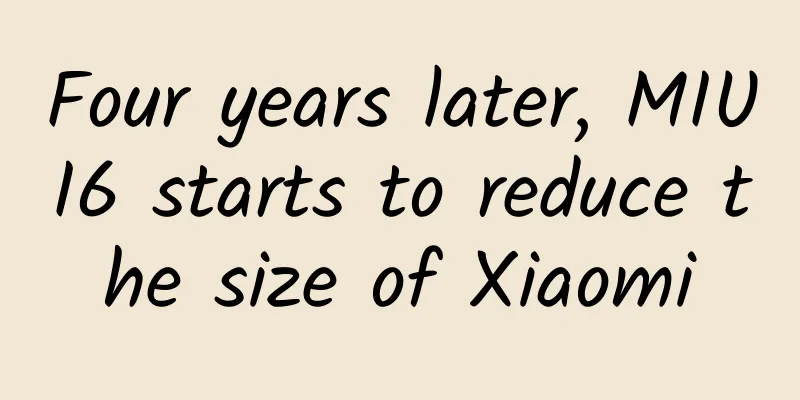Disposable food packaging, the best choice for those with a cleanliness craving?

|
1. Is the disposable packaging we take for granted really that good? With the endless involution of the e-commerce economy, disposable consumer goods such as disposable face towels and disposable underwear are emerging in an endless stream, and the disposable consumption mode of "everything can be disposable" continues to take root in people's minds. Today, "disposable" no longer means "making do", but has become the daily life of most people. Many people believe that disposable food packaging is brand new and clean, which can ensure that food is not affected by external impurities, not only preserving the flavor, but also helping them avoid secondary contamination caused by poor cleaning and disinfection of tableware in individual restaurants. However, is disposable food packaging really a synonym for cleanliness and hygiene? Various fruits and vegetables packed in disposable plastic in supermarket Image | Sohu.com Disposable packaging materials are undoubtedly more advantageous in terms of convenience and sealing and preserving food, but the environmental impacts of the complex production, processing, use and disposal cannot be ignored, and disposable packaging materials themselves also have potential health risks. Therefore, we need to peel off the surface of disposable packaging convenience and deeply evaluate the various visible and invisible impacts it has on our lives and the surrounding environment, so as to help people make more informed choices in food packaging in the future. All kinds of food packaged in disposable materials Photo: Meredith Rizzo/NPR 2. From birth to death: Disposable food packaging has many hidden dangers* Production and use - the ingredients that cannot be ignored: The main health threats posed by disposable food packaging to the human body in production and use come from three aspects: material composition, additives and packaging inks and coatings. Material composition: Most disposable food packaging is made of plastic. In terms of composition, polypropylene (PP) and polyethylene (PE) are often used to make these disposable plastic food packaging. These substances usually do not cause obvious harm to the human body at low concentrations, but long-term exposure or high-concentration exposure may have a certain effect on the respiratory tract. Additives: Plasticizers are often added to disposable food packaging to change the packaging shape. When people use disposable food packaging to hold food for microwave heating, these plasticizers may penetrate into the food. Long-term exposure to plasticizers may interfere with the human endocrine system. Some merchants also add fluorescent agents to disposable plastic boxes to whiten the packaging boxes. These fluorescent agents contain chemical components that are not easily decomposed by the human body and can easily increase the burden on the liver. For paper disposable packaging, some are exposed to chemical treatment agents such as bleach during the production process. The residues of these substances may affect the quality and safety of food. Ink and coating: The ink on disposable food packaging may contain some harmful substances, such as lead, chromium and volatile organic compounds. These chemicals pose potential risks to the human body. In addition, most disposable food packaging currently contains coatings inside to make disposable containers resistant to heat and moisture. However, these coatings may release perfluorinated and polyfluoroalkyl substances (PFAS). Once absorbed by the human body, these substances will first bind to serum proteins and then deposit in various organs of the body such as the liver, kidneys and testicles, thereby interfering with endocrine. According to the "Dietary Exposure Study of Perfluorooctanoic Acid and Perfluorooctane Sulfonate in Disposable Paper Cups" published in "Modern Food Science and Technology" in 2020, the detection rate of PFAS in disposable paper cups exceeds 60%. In addition, an evaluation report released by "Consumer Reports" also tested more than 100 food packaging products from American restaurants and grocery chains. The results showed that PFAS substances can be detected in paper bags for French fries, hamburger wrappers, plant fiber salad bowls and paper plates. PFAS substances on disposable food packaging can enter the human body directly through food, causing health hazards to the human body Photo | University of Notre Dame Storage and transportation: you don’t know what it has been through: Disposable food packaging needs to be properly transported and stored after mass production. However, if it is not transported and stored properly, these packages may face various problems. Extrusion, tearing and damage during transportation: During transportation, disposable food packaging is easily squeezed, torn or damaged, which may cause holes or cracks on the outer surface of the packaging, allowing microorganisms, dust, dirt and bacteria from the external environment to enter the interior of the packaging. The interior of the packaging may be contaminated, thus affecting its packaging function and causing contamination to the food. Moldy and dirty packaging: Some paper disposable food packaging can easily become moldy and dirty if stored in a humid or unventilated environment. Mold and bacteria may breed under these conditions. If not handled in time, they may spread to the inside of the packaging, causing potential food safety issues. Packaging contamination and aging: Long-term storage may cause some disposable food packaging to cause the packaging materials to age and become obsolete, thereby reducing the preservation and sealing properties of the packaging, making it more susceptible to external environmental influences and unable to effectively isolate food from the outside world. Waste disposal: a heavy environmental burden When disposable food packaging is used up, most of it goes to landfill or incineration, and some leaks into the natural environment. A study (Microplastics pose a new threat to terrestrial ecosystems) estimates that one-third of discarded plastics may end up in soil or freshwater. The degradation rate of these discarded plastics that enter the soil is very slow, usually taking decades or even longer to degrade. In fact, the degradation rate of paper in natural conditions is also slow. During the degradation process, plastics may break down into microplastic particles, which can affect the development of some vegetable crops and the normal growth of soil organisms such as earthworms. Some particles will also be enriched in the human body through the food chain, which has potential impacts on both ecosystems and human health. However, additives in packaging materials (plasticizers, dyes, inks on labels, etc.) will quickly "escape" and are likely to seep into soil and groundwater. In addition, disposable food packaging will release harmful gases such as dioxins and polychlorinated biphenyls during the incineration stage, which poses a potential hazard to the human body. At the same time, disposable food packaging that enters the landfill stage may leak harmful substances during the degradation process, thereby contaminating the soil and groundwater and having an irreversible impact on the ecological environment. The PFAS substances mentioned above can also enter the atmosphere, water or soil through landfill, incineration or composting, and then attach to the surface of crops or be ingested by other animals, and finally accumulate in the human body. Plastic waste that seeps into the water can also migrate long distances with the water flow and eventually flow into the ocean, causing serious pollution to the marine ecosystem. The average degradation time of different food packaging is longer than that of disposable packaging. Photo | foodprint 3. Reuse, a more hygienic and sustainable choice In the field of food packaging, it has never been so important to find a balance between convenience and hygienic safety and sustainability. If we continue to rely on the widespread use of disposable food packaging for convenience, the goal of achieving sustainable and environmentally friendly living will be difficult to achieve. Disposable food packaging and tableware cannot be "reused" and may pose a health hazard to the human body. The reuse model, that is, using containers tailored for systematic reuse, is a more hygienic and sustainable option. The containers used in the reuse model are made of healthy materials, are environmentally friendly, durable, easy to clean, and easy to maintain, so they play a key role in mitigating the health risks associated with disposable food packaging. At the same time, reusable packaging is usually designed for multiple uses, and more attention is paid to quality control and standardization during the production process to ensure that the packaging still meets hygiene standards after multiple uses. Finally, modern technology provides a way to optimize the reusability of packaging materials. Using system management and big data analysis can effectively track the distributed reusable containers and optimize the cleaning and maintenance of reusable containers through calculations; using central disinfection systems can ensure that the cleaning process meets the highest hygiene standards while minimizing the ecological footprint associated with its production and disposal. Pack food in reusable containers Photo | Forever Ware Conclusion In fact, disposable food packaging is not as safe as we take it for granted. On the contrary, there are many environmental and health risks from production to final disposal. When faced with the health challenges brought by disposable packaging, we can find hope for a solution in a simple but revolutionary reusable model. Because reusable packaging needs to be used multiple times, it is often made of more durable materials, making it more helpful to prevent the growth of bacteria and pathogens. At the same time, the reuse system can use modern Internet of Things technology to track and trace, improve the efficiency of cleaning and maintenance, and therefore be cleaner and more secure. As consumers, one way to promote solutions to the health hazards of disposable packaging is to reduce the amount at the source and consciously give priority to reusable products, thereby reducing the demand for disposable packaging. Giving reusable models a chance is also an opportunity to solve the hazards of disposable food packaging and an opportunity to embrace a more sustainable and safer future. References [1] “Food Packaging Materials.” Food Packaging Forum Foundation. Available at: https://www.foodpackagingforum.org/food-packaging-health/food-packaging-materials [2] Greenhouse Gas Emissions from the Plastics Processing Industry. Available at: https://www.nrcan.gc.ca/energy/efficiency/industry/technical-info/benchmarking/plastics/5211 [3] Disposable food packaging and serving materials—trends and biodegradability. Available at: https://www.mdpi.com/2073-4360/13/20/3606 [4] Dangerous PFAS Chemicals Are in Your Food Packaging. Available at: https://www.consumerreports.org/health/food-contaminants/dangerous-pfas-chemicals-are-in-your-food-packaging-a3786252074/ [5] Plastic containers can contain PFAS — and it's getting into food. Available at: https://news.nd.edu/news/plastic-containers-can-contain-pfas-and-its-getting-into-food/ [6] “Getting Up to Speed: Ground Water Contamination.” Available at: https://www.epa.gov/sites/production/files/2015-08/documents/mgwc-gwc1.pdf [7] Microplastics as an emerging threat to terrestrial ecosystems. Available at: https://doi.org/10.1111/gcb.14020 [8] The Environmental Impact of Food Packaging. Available at: https://foodprint.org/issues/the-environmental-impact-of-food-packaging/#easy-footnote-bottom-31-1295 [9] The plastic problem isn't your fault, but you can be part of the solution. Available at: https://www.npr.org/2021/07/12/1015296355/zero-waste-single-use-plastic-trash-recycle -End- Edit: Get rid of plastic |
<<: As fat as two wolves! Should the wolves in Hoh Xil be fed?
Recommend
How much does it cost to develop a mini program? How much does it cost to make a mini program?
With the rapid development of the Internet, mini ...
Three major trends in new media operations in 2017
On November 16, 2017, Penguin Think Tank and Tenc...
Are primary and secondary school students addicted to "nasal energy bars"? The more they inhale, the more addicted they become?
Recently, two primary school students in Tianjin ...
Why are airplane windows round?
When everyone goes out to play on the plane I alw...
Massaging the neck can cause cerebral infarction! Can you still enjoy massage?
Audit expert: Yin Tielun Deputy Chief Physician, ...
Apple iWatch will have to wait until next year!
According to Taiwan's Economic Daily News, th...
Such a marketing landing page is a bit of a waste of promotion costs!
Students who have listened to my speech must be i...
23 of Apple's highest-paying jobs: Coders are in high demand
As the world's largest company by market valu...
The differences between Windows 10 versions: the most powerful one you've never guessed
Windows 10 has been released for a year and a half...
Analysis of mobile advertising market in Q1 2021
After a comprehensive analysis of the mobile adve...
Why are you not good at marketing?
Erya told me today that she has registered accoun...
Quasi-unicorn Thunderbird Technology's net profit surged 88%, with multi-dimensional long-term layout becoming the key to its growth
The mobile Internet dividend has entered a period...
Understand at a glance: Children aged 3-11 are starting to receive the new coronavirus vaccine, all the questions you care about are here!
In accordance with the overall national deploymen...
How much does it cost to develop the Wenshan bargaining app? How much does it cost to develop the Wenshan bargaining mini program?
The main factors affecting the price of mini prog...
Special Edition of Electric Three Ways: Ariel Lin's Interesting Review of Wang Feng's FIIL Headphones
It is really not easy to be a celebrity nowadays....









